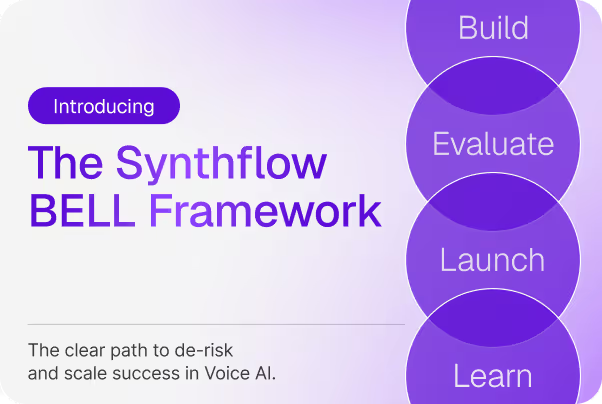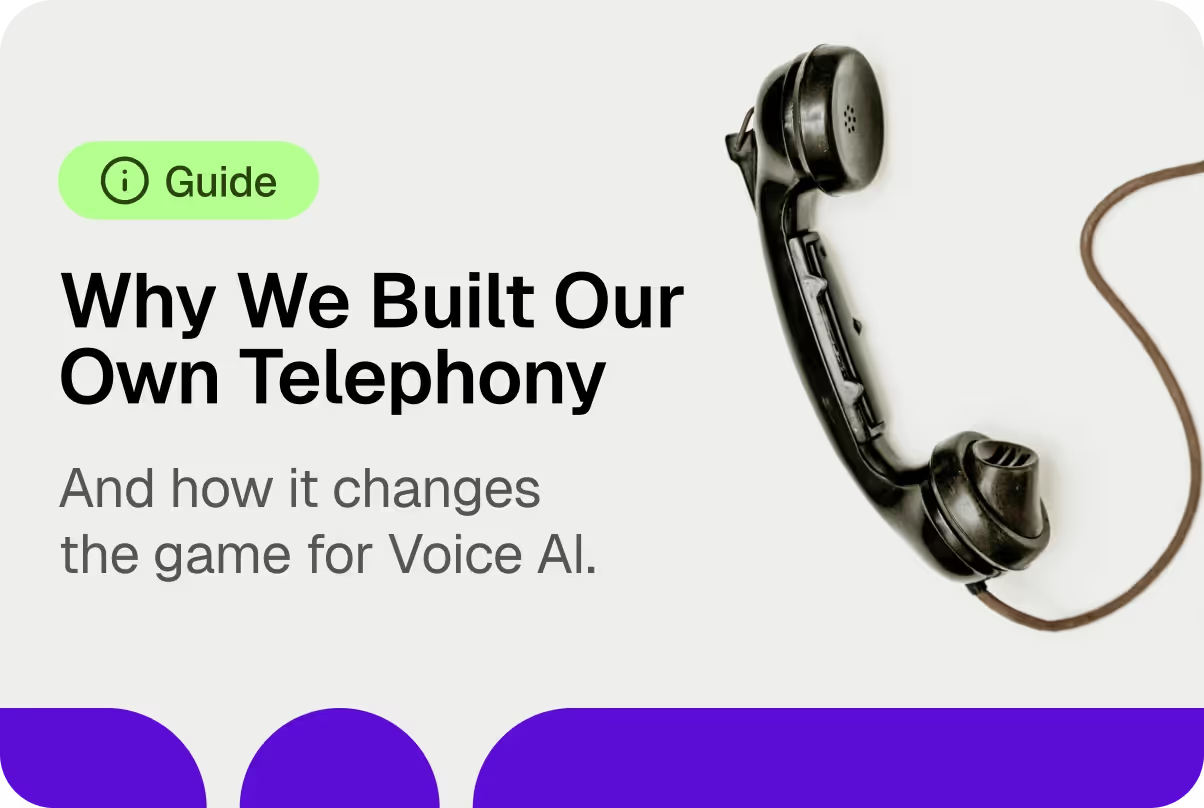Conversational AI
Conversational AI in Insurance: Smarter, Faster Claims

Table of Contents

Insurance businesses face mounting pressure to enhance customer experiences while cutting costs. Solutions like Synthflow AI voice agents are empowering insurers to meet these goals, driving higher efficiency and delivering personalized service at scale.
According to Bain&Company, Insurance businesses worldwide have a $50 billion financial opportunity from generative AI to harness it in ways that could boost their revenues by as much as 20% and cut their cost by up to 15%.
The benefits will come through three routes:
- Raising productivity and resizing the workforce
- Bringing revenue and lifting sales through effective agents and personalized digital advice.
- Reducing commissions from direct channels
The use of conversational AI in the insurance industry empowers insurers to provide personalized experiences, enhance operational efficiency, and reduce costs.
For instance Synthflow’s voice assistant helped Medbelle, a leading personal healthcare provideraced the ongoing challenge of managing patient appointments efficiently, particularly outside regular working hours or when consultants were unavailable. This lead to a 60% increase in scheduling efficiency and improved patient satisfaction scores improved by 25%:
In this blog, we'll explore what is conversational AI in Insurance, its use cases, and choosing the right tool for implementation.
What is conversational AI in Insurance?
Conversational AI refers to technology such as chatbots and voice agents that a user can talk to. Powered by natural language processing (NLP) and machine learning, conversational AI helps insurance companies provide human-like conversations to its customers without having to include a human agent
In an insurance team, conversational AI can directly tackle many of the most common forms of customer service communications you encounter. Implementing conversational AI provides an opportunity to improve customer service.

Calls to an insurance call center typically breakdown as follows:
- 55% are about obtaining information
- 35% are about executing a transition
- 10% are about resolving an issue
Instead of 80% of these calls handled by humans, conversational AI will reduce it by just 10%. The idea of implementing automation is to make call centers smarter and faster. It can be used for tasks such as risk detection, predictive modeling, and customer service automation.
Use cases like managing patient appointments in healthcare show how conversational AI is already handling high-volume, routine tasks across industries.
The effects will likely surface in both human and digital-led channels. For instance, it will reduce low-value interactions with tied agents and focus on self-service and tailored conversations at scale.

For instance, Helvetia in Switzerland has introduced a generative AI-powered service for direct customer support, answering questions on Insurance and pensions. Meanwhile, HDFC Ergo in India has launched a center focused on using generative AI to create hyper-personalized customer experiences.
Conversational AI Applications Across Insurance Verticals
As the insurance industry adapts to technological advancements, conversational AI plays a pivotal role in enhancing customer experiences. Here's how it adds value across various insurance verticals:
Key use cases of conversational AI in Insurance
Conversational AI has the potential to streamline and automate several steps in your insurance process, leading to faster resolution, reduced cost, and high accuracy. Here are some of the use cases in which conversational AI impacts Insurance-
Claims processing and First Notice of Loss (FNOL)
FNOL is the first official notice sent to the insurance company informing about the asset loss. According to Accenture, 39% of policyholders are not fully satisfied by the speed of their policy settlement. The major reason for this is that the process requires human intervention at multiple stages, from assessing damage to calculating payment.

Incorporating conversational AI and automation into the underwriting workflow is the prime time spent on administrative tasks. AI agents can answer FNOL calls, qualify the customers, and thank them for providing all necessary information. The AI agent will then analyze the call and pass all the details to your human agent, who can finalize it.
This can help your insurance company reduce manual costs by 70% and make claim processing simpler.
24/7 customer support & query resolution
Fortune 500 insurance companies usually have an enormous customer base spread across multiple countries, which leads to tens of millions of calls each year. Handling such a huge number of calls across multiple languages and time durations is a significant financial burden that impairs growth.
When it comes to response time, the golden time is five minutes or less. If not, the chances of converting can drop by 400%. AI voice bots excel at resolving customer queries and providing immediate assistance.
For example, if a policyholder asks, "What does my premium cover?" Your conversational AI platform will quickly provide the information, allowing customers to get answers without waiting for a human agent. This approach enhances customer satisfaction and lets agents focus on more complex inquiries.
Fraud detection
AI voice bots can quickly analyze data connections to detect fraud, even in complex schemes. They can identify accounts that share suspicious details, track down accounts linked to fraudsters, and uncover links that lead to them.
There are three main ways AI voice agents do fraud detection:
- On calls, AI voice agents always look for recognizable patterns or signs that can lead to fraudulent activity.
- Conduct a complete link analysis and document assessment to evaluate if the person is speaking the truth.
- Conversational AI bots constantly analyze new data to find new patterns and trends that emerge to avoid any fraudulent activity.
Conversational AI is always integrated, and Insurance's insurance company ecosystem makes it easy to cross-reference customer information and provide a more comprehensive fraud analysis.
Proactive renewal and upsells
Although most of the benefits we've highlighted focus on handling incoming customer queries, it's important to remember that AI Agents are equally effective for proactive communication. In the insurance industry, for example, AI Agents can send timely reminders to customers about upcoming renewal dates or notify them of policy updates or changes that may affect their coverage.
With the AI Agent's omnichannel capabilities, customers can respond directly to confirm renewals or ask questions, bypassing the pitfalls of traditional channels like email. Unlike email, where customers might miss or ignore reminders, an AI-driven, interactive approach ensures better engagement and reduces the chance of missed renewals.
Benefits of Using Conversational AI in Insurance
The market value of AI in Insurance is expected to reach $36B by 2026 from $4.5B in 2022, a whopping 800% increase. Almost half of that growth is directed to conversational AI in insurance customer support and claims adjustment. Conversational AI redefines how you interact with customers and provides a ton of benefits.
Significantly reduce wait times
One of the biggest challenges of customer service centers is the sheer volume of calls they receive. The difficulty increases with staff shortages, which can represent up to 95% of contact center costs.
However, a huge number of these support calls are for routine requests, like password resets or questions about interest rates, which can be solved quickly. When virtual assistants or ai receptionist take on these calls, more complicated requests can be transferred to human agents.
By handling routine queries instantly, voice bots not only cut wait times but also free up human agents to focus on high-value interactions, boosting overall customer satisfaction and retention
Automates Laborious Processes
In the insurance industry, almost every customer interaction hinges on thorough identification and verification (ID&V) processes. Traditionally, these steps are managed manually by human agents, leading to slow and inefficient workflows.
By integrating Conversational AI into customer service operations, the majority of these manual tasks—such as ID&V, collecting basic customer details, and gathering necessary documents or photos for claim processing—can be automated.
For instance, a Fortune 100 insurance company leveraged Conversational AI to streamline ID&V, enabling a single AI agent to handle up to 20 million calls annually. This innovation significantly reduced the workload for human employees, enhanced customer satisfaction, and cut average handling times by 1.5 minutes.
Improved customer Insights
AI-powered conversational voice bots provide a wealth of insights into customer behavior, pain points, and preferences.
With voice bots, you can record your customer calls to:
- Spot trends
- Find upsell/cross opportunities
- Make sure staff are asking the right questions
- Ensure voice bots are adhering to script/questions that increase revenue
You can also monitor the call performance of your agent to get more insight into the customer experience. Your voice bots provide details on the following:
- Average daily calls
- Total talk time
- Your preferred keywords spotted in conversations
- And more
This data-driven approach not only strengthens decision-making but also helps personalize experiences, boosting loyalty and retention.
Choosing the right conversational AI platform for Insurance
Implementing conversational AI tools in the insurance sector requires selecting the right platform that meets the unique needs of insurance companies. Here are some of the critical factors to consider when choosing the right conversational platform:
Why choose Synthflow AI?
Synthflow's no-code, drag-and-drop interface allows users to set up a voice agent in minutes without needing any technical knowledge or coding ability. It can seamlessly handle a large volume of calls across all timelines and languages.
Features:
- Zero latency
- Text-to-speech and advanced transcription features
- 11labs integration – clone voices and automatically schedule appointments into your calendar
- Robust customer support
- Advanced call sorting, logging, and transferring
- Generate responses and action them live in call
- Resell Synthflow – fully white-labeled version available
- CRM Integrations – High Level, HubSpot
Synthflow's features are highly advanced, and its use cases are well-suited for any insurance business looking to automate aspects of its sales and marketing seamlessly.
Want to try a free demo to see how you can replace your traditional call centers with AI voice bots? Sign up here.



.avif)